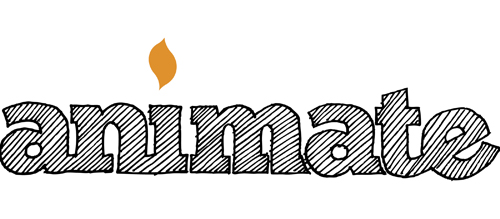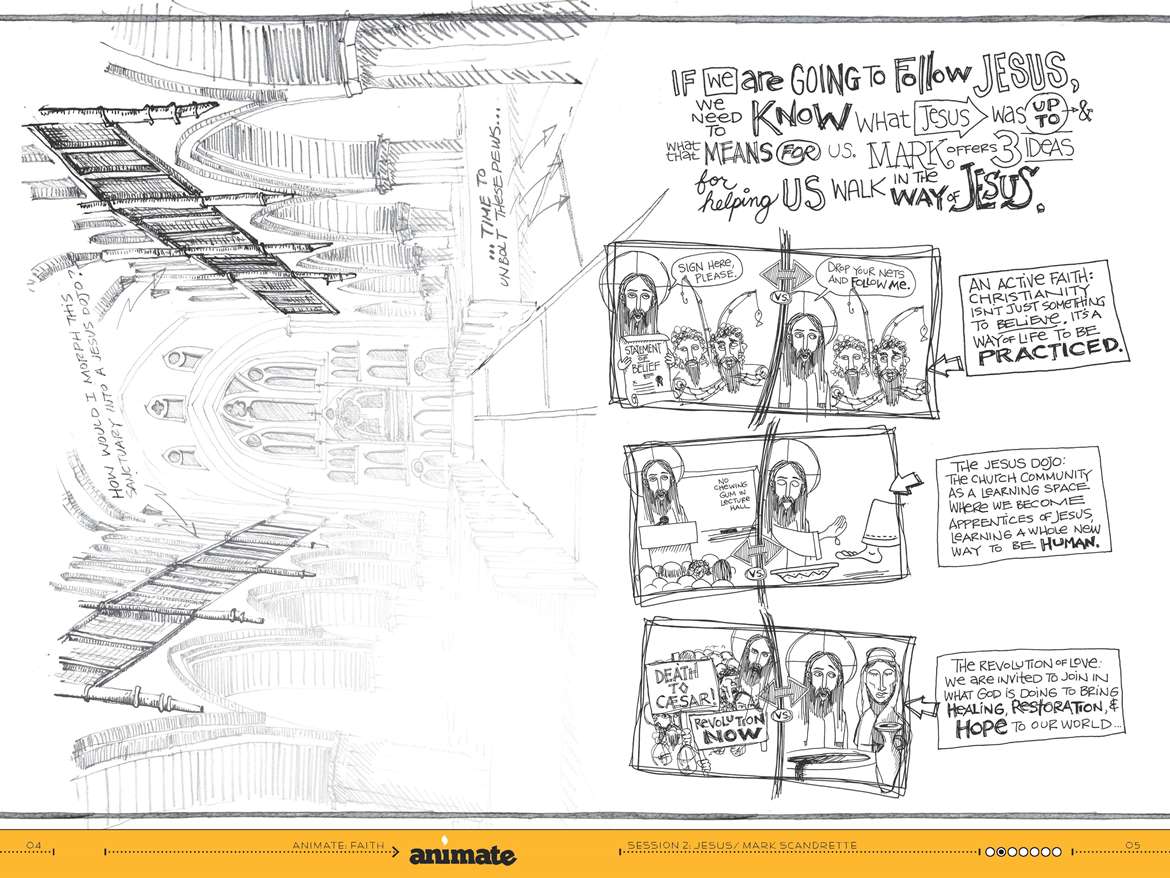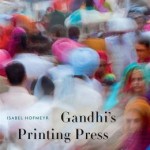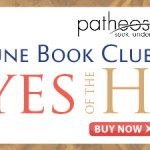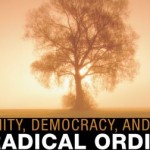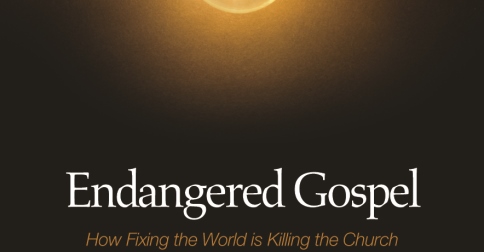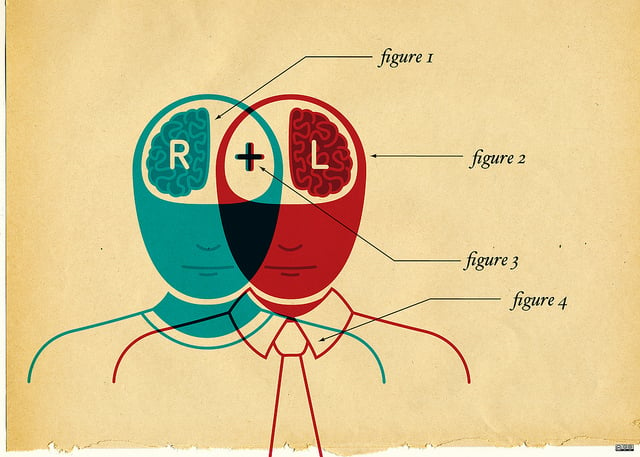[ This post is part of the Patheos Book Club discussion of animate.faith ]
I recently had the opportunity to review the new animate.faith curriculum from Sparkhouse, which is a groundbreaking effort to create a new kind of Christian education resource for emerging/progressive church communities. The curriculum consists of a DVD with seven segments by respected teachers (and bonus segments consisting of interviews with the seven speakers), a facilitator’s guide and a participant’s journal. While the DVD and facilitator’s guide are essential to the curriculum, I tend to agree with Adam Walker Cleaveland’s assessment that the participant’s journal is optional at best, although definitely a lovely example of Paul Soupiset’s innovative design work (more on this momentarily). Animate launches participants into conversation about seven concepts that lie at the heart of the Christian faith (given here with the featured speaker that addresses each topic:
- God: Brian McClaren [ Sample clip ]
- Religion: Lillian Daniel [ Sample clip ]
- Jesus: Mark Scandrette [ Sample clip ]
- Salvation: Shane Hipps [ Sample clip ]
- Cross: Nadia Bolz-Weber [ Sample clip ]
- Bible: Lauren Winner [ Sample clip ]
- Church: Bruce Reyes-Chow [ Sample clip ]
Overall, animate.faith is a superb resource, that unlike most church curricula that I am familiar with, offers participants more questions than answers. Each of the above videos are designed to draw people into conversation about the basic elements of Christian theology, and the choice of speakers, the format and the keen design of the segments all work together to promote conversation.
Although all of the segments are helpful, two of them stood out for me, in regard to the Slow Church project that John and I are working on. My favorite of the clips was Lillian Daniel’s, which challenges the notion of the spiritual buffet (my term, not hers), that sort of individualistic faith that picks wisdom and practices from a number of religious traditions, in order to fit one’s tastes. Instead, Daniel challenges us to sink our roots into something that is bigger than ourselves, specifically a religious tradition, adopting the language and practices that are peculiar to that tradition. This segment resonated with me, as John and I maintain in the Slow Church book that tradition is all too often discarded in the pursuit of an efficient, industrialized Christianity.
The other segment that I found to be especially compelling was the final one, Bruce Reyes-Chow’s discussion of church. Although, his repeated use of the language of “going to church” (instead of BEING a part of or BELONGING TO a church community) was grating, I found his argument for church as family — in all its brokenness — a poignant (and, of course, biblically-rooted too). Just as the local food economy is central to the Slow Food movement, so too, the local church (it’s own sort of economy, rooted in God’s abundant provision) is central to our account of Slow Church, and Bruce does a fine job of making the case for the importance of being engaged in a local congregation.
The best part of this animate curriculum, might perhaps be the lovely and engaging drawings and design-work of Paul Soupiset (read a Q/A with Paul about this project here). The coordination of the design for this whole curriculum (all of the segments of the DVD, as well as the art-intense volumes of both the facilitator’s guide and the participant’s journal) was certainly a massive undertaking, and Soupiset has gracefully pulled off a striking product. His illustrations throughout the videos, keep the viewers engaged and keenly and effectively illustrate key points of the speakers’ talks. His pen and ink drawings through the two books of the curriculum (see example above), similarly make the finest and most innovatively designed church curricula that I have ever seen. Unlike most curricula, Soupiset’s illustrations and diagrams will capture and lock into the attentions of even the most attention-deficient participants. In a similar fashion to the questioning, dialogical style of the speakers on the DVD, Soupiset’s art sparks the imaginations of participants and guides them deeper into conversation.
Animate is a superb resource that will be engaging and beneficial for a wide variety of church settings — even ones that do not identify themselves as emerging or progressive.

